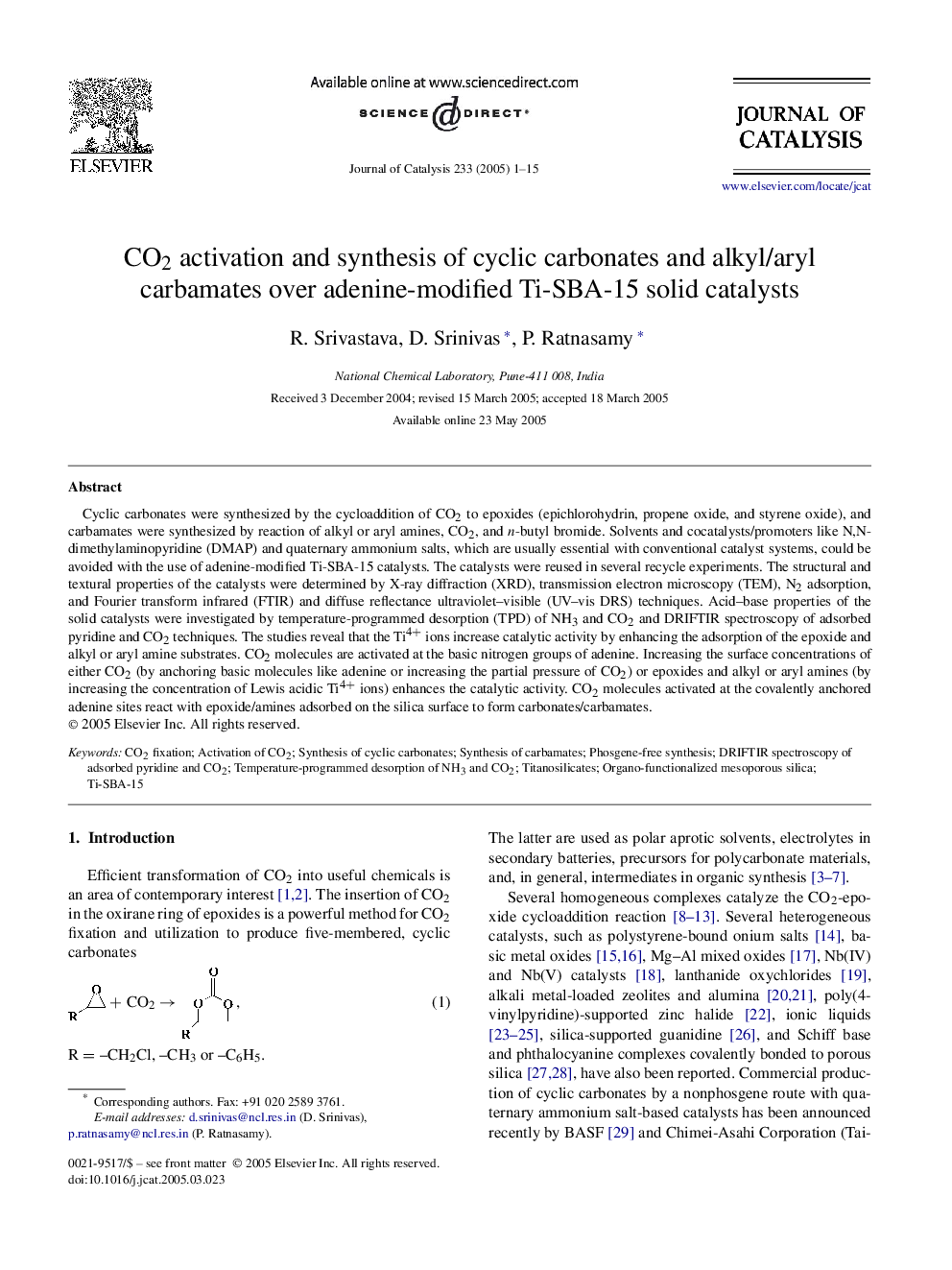| Article ID | Journal | Published Year | Pages | File Type |
|---|---|---|---|---|
| 10244768 | Journal of Catalysis | 2005 | 15 Pages |
Abstract
Cyclic carbonates were synthesized by the cycloaddition of CO2 to epoxides (epichlorohydrin, propene oxide, and styrene oxide), and carbamates were synthesized by reaction of alkyl or aryl amines, CO2, and n-butyl bromide. Solvents and cocatalysts/promoters like N,N-dimethylaminopyridine (DMAP) and quaternary ammonium salts, which are usually essential with conventional catalyst systems, could be avoided with the use of adenine-modified Ti-SBA-15 catalysts. The catalysts were reused in several recycle experiments. The structural and textural properties of the catalysts were determined by X-ray diffraction (XRD), transmission electron microscopy (TEM), N2 adsorption, and Fourier transform infrared (FTIR) and diffuse reflectance ultraviolet-visible (UV-vis DRS) techniques. Acid-base properties of the solid catalysts were investigated by temperature-programmed desorption (TPD) of NH3 and CO2 and DRIFTIR spectroscopy of adsorbed pyridine and CO2 techniques. The studies reveal that the Ti4+ ions increase catalytic activity by enhancing the adsorption of the epoxide and alkyl or aryl amine substrates. CO2 molecules are activated at the basic nitrogen groups of adenine. Increasing the surface concentrations of either CO2 (by anchoring basic molecules like adenine or increasing the partial pressure of CO2) or epoxides and alkyl or aryl amines (by increasing the concentration of Lewis acidic Ti4+ ions) enhances the catalytic activity. CO2 molecules activated at the covalently anchored adenine sites react with epoxide/amines adsorbed on the silica surface to form carbonates/carbamates.
Keywords
Related Topics
Physical Sciences and Engineering
Chemical Engineering
Catalysis
Authors
R. Srivastava, D. Srinivas, P. Ratnasamy,
